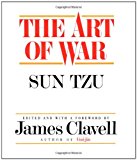World War II - the Beginning
World War II, the global military conflict that, in terms of lives lost and material destruction, was the most devastating war in human history. It began in 1939 as a European conflict between Germany and an Anglo-French coalition but eventually widened to include most of the nations of the world. It ended in 1945, leaving a new world order dominated by the United States and the USSR.
More than any previous war, World War II involved the commitment of nations’ entire human and economic resources, the blurring of the distinction between combatant and noncombatant, and the expansion of the battlefield to include all of the enemy’s territory. The most important determinants of its outcome were industrial capacity and personnel. In the last stages of the war, two radically new weapons were introduced: the long-range rocket and the atomic bomb. In the main, however, the war was fought with the same or improved weapons of the types used in World War I. The greatest advances were in aircraft and tanks.
The World After World War I
Three major powers had been dissatisfied with the outcome of World War I. Germany, the principal defeated nation, bitterly resented the territorial losses and reparations payments imposed on it by the Treaty of Versailles. Italy, one of the victors, found its territorial gains far from enough either to offset the cost of the war or to satisfy its ambitions. Japan, also a victor, was unhappy about its failure to gain control of China.
Causes of the War
France, Great Britain, and the U.S. had attained their wartime objectives. They had reduced Germany to a military cipher and had reorganized Europe and the world as they saw fit. The French and the British frequently disagreed on policy in the postwar period, however, and were unsure of their ability to defend the peace settlement. The U.S., disillusioned by the Europeans’ failure to repay their war debts, retreated into isolationism.
The Failure of Peace Efforts
During the 1920s, attempts were made to achieve a stable peace. The first was the establishment (1920) of the League of Nations as a forum in which nations could settle their disputes. The league’s powers were limited to persuasion and various levels of moral and economic sanctions that the members were free to carry out as they saw fit. At the Washington Conference of 1921-22, the principal naval powers agreed to limit their navies according to a fixed ratio. The Locarno Conference (1925) produced a treaty guarantee of the German-French boundary and an arbitration agreement between Germany and Poland. In the Paris Peace Pact (1928), 63 countries, including all the great powers except the USSR, renounced war as an instrument of national policy and pledged to resolve all disputes among them “by pacific means.” The signatories had agreed beforehand to exempt wars of “self-defense.”
The Rise of Fascism
One of the victors’ stated aims in World War I had been “to make the world safe for democracy,” and postwar Germany adopted a democratic constitution, as did most of the other states restored or created after the war. In the 1920s, however, the wave of the future appeared to be a form of nationalistic, militaristic totalitarianism known by its Italian name, fascism. It promised to minister to peoples’ wants more effectively than democracy and presented itself as the one sure defense against communism. Benito Mussolini established the first Fascist dictatorship in Italy in 1922.
Formation of the Axis Coalition
Adolf Hitler, the Fuhrer (“leader”) of the German National Socialist (Nazi) Party, preached a racist brand of fascism. Hitler promised to overturn the Versailles Treaty and secure additional Lebensraum (“living space”) for the German people, who he contended deserved more as members of a superior race. In the early 1930s, the depression hit Germany. The moderate parties could not agree on what to do about it, and large numbers of voters turned to the Nazis and Communists. In 1933 Hitler became the German chancellor, and in a series of subsequent moves established himself as dictator.
Japan did not formally adopt fascism, but the armed forces’ powerful position in the government enabled them to impose a similar type of totalitarianism. As dismantlers of the world status quo, the Japanese military were well ahead of Hitler. They used a minor clash with Chinese troops near Mukden in 1931 as a pretext for taking over all of Manchuria, where they proclaimed the puppet state of Manchukuo in 1932. In 1937-38 they occupied the main Chinese ports. Having denounced the disarmament clauses of the Versailles Treaty, created a new air force, and reintroduced conscription, Hitler tried out his new weapons on the side of right-wing military rebels in the Spanish Civil War (1936-39). The venture brought him into collaboration with Mussolini, who was also supporting the Spanish revolt after having seized (1935-36) Ethiopia in a small war. Treaties between Germany, Italy, and Japan in 1936-37 brought into being the Rome-Berlin-Tokyo Axis. The Axis thereafter became the collective term for those countries and their allies.
German Aggression in Europe
Hitler launched his own expansionist drive with the annexation of Austria in March 1938. The way was clear: Mussolini supported him; and the British and French, overawed by German rearmament, accepted Hitler’s claim that the status of Austria was an internal German affair. The U.S. had severely impaired its ability to act against aggression by passing a neutrality law that prohibited material assistance to all parties in foreign conflicts.
In September 1938 Hitler threatened war to annex the western border area of Czechoslovakia, the Sudetenland and its 3.5 million ethnic Germans. The British prime minister Neville Chamberlain initiated talks that culminated at the end of the month in the Munich Pact, by which the Czechs, on British and French urging, relinquished the Sudetenland in return for Hitler’s promise not to take any more Czech territory. Chamberlain believed he had achieved “peace for our time,” but the word Munich soon implied abject and futile appeasement.
Less than six months later, in March 1939, Hitler seized the remainder of Czechoslovakia. Alarmed by this new aggression and by Hitler’s threats against Poland, the British government pledged to aid that country if Germany threatened its independence. France already had a mutual defense treaty with Poland.
The turn away from appeasement brought the Soviet Union to the fore. Joseph Stalin, the Soviet dictator, had offered military help to Czechoslovakia during the 1938 crisis, but had been ignored by all the parties to the Munich Pact. Now that war threatened, he was courted by both sides, but Hitler made the more attractive offer. Allied with Britain and France, the Soviet Union might well have had to fight, but all Germany asked for was its neutrality. In Moscow, on the night of August 23, 1939, the Nazi-Soviet Pact was signed. In the part published the next day, Germany and the Soviet Union agreed not to go to war against each other. A secret protocol gave Stalin a free hand in Finland, Estonia, Latvia, eastern Poland, and eastern Romania.
Military Operations
In the early morning hours of September 1, 1939, the German armies marched into Poland. On September 3 the British and French surprised Hitler by declaring war on Germany, but they had no plans for rendering active assistance to the Poles.
The First Phase: Dominance of the Axis
Man for man, the German and Polish forces were an even match. Hitler committed about 1.5 million troops, and the Polish commander, Marshal Edward Smigly-Rydz, expected to muster 1.8 million. That was not the whole picture, however. The Germans had six panzer (armored) and four motorized divisions; the Poles had one armored and one motorized brigade and a few tank battalions. The Germans’ 1600 aircraft were mostly of the latest types. Half of the Poles’ 935 planes were obsolete.
The Blitzkrieg in Poland
Polish strategic doctrine called for a rigid defense of the whole frontier and anticipated several weeks of preliminary skirmishing. It was wrong on both counts. On the morning of September 1, waves of German bombers hit the railroads and hopelessly snarled the Polish mobilization. In four more days, two army groups-one on the north out of East Prussia, the other on the south out of Silesia-had broken through on relatively narrow fronts and were sending armored spearheads on fast drives toward Warsaw and Brest. This was blitzkrieg (lightning war): the use of armor, air power, and mobile infantry in a pincers movement to encircle the enemy.
Between September 8 and 10, the Germans closed in on Warsaw from the north and south, trapping the Polish forces west of the capital. On September 17, a second, deeper encirclement closed 160 km (100 mi) east, near Brest. On that day, too, the Soviet Red Army lunged across the border. By September 20, practically the whole country was in German or Soviet hands, and only isolated pockets continued to resist. The last to surrender was the fortress at Kock, on October 6.
The Phony War
A French and British offensive in the west might have enabled Poland to fight longer, but until enough British arrived, it would have had to be mounted mainly by the French; French strategy, however, was defensive, based on holding the heavily fortified Maginot line. The quick finish in Poland left both sides at loose ends. Dismayed, the British and French became preoccupied with schemes to stave off a bloody replay of World War I. Hitler made a halfhearted peace offer and at the same time ordered his generals to ready an attack on the Low Countries and France. The generals, who did not think they could do against France what they had done in Poland, asked for time and insisted they could only take Holland, Belgium, and the French channel coast. Except at sea, where German submarines operated against merchant shipping and the British navy imposed a blockade, so little was going on after the first week in October that the U.S. newspapers called it the Phony War.
The Soviet-Finnish War
On November 30, after two months of diplomatic wrangling, the Soviet Union declared war on Finland. Stalin was bent on having a blitzkrieg of his own, but his plan faltered. The Finns, under Marshal Carl G. Mannerheim, were expert at winter warfare. The Soviet troops, on the other hand, were often badly led, in part because political purges had claimed many of the Red Army’s senior officers. Outnumbered by at least five to one, the Finns held their own and kept fighting into the new year.
The attack on Finland aroused world opinion against the Soviet Union and gave an opening to the British and French. They had long had their eyes on a mine at Kiruna in northern Sweden that was Germany’s main source of iron ore. In summer the ore went through the Baltic Sea, in winter to the ice-free Norwegian port of Narvik and then through neutral Norwegian waters to Germany. The Narvik-Kiruna railroad also connected on the east with the Finnish railroads; consequently, an Anglo-French force ostensibly sent to help the Finns would automatically be in position to occupy Narvik and Kiruna. The problem was to get Norway and Sweden to cooperate, which both refused to do.
In Germany, the naval chief, Admiral Erich Raeder, urged Hitler to occupy Norway for the sake of its open-water ports on the Atlantic, but Hitler showed little interest until late January 1940, when the weather and the discovery of some invasion plans by Belgium forced him to delay the attack on the Low Countries and France indefinitely. The first studies he had made showed that Norway could best be taken by simultaneous landings at eight port cities from Narvik to Oslo. Because the troops would have to be transported on warships and because those would be easy prey for the British navy, the operation would have to be executed while the nights were long.
Denmark, which posed no military problems, could be usefully included because it had airfields close to Norway.
Denmark and Norway
Stalin, fearing outside intervention, ended his war on March 8 on terms that cost Finland territory but left it independent. The British and French then had to find another pretext for their projected action in Narvik and Kiruna; they decided to lay mines just outside the Narvik harbor. This they thought would provoke some kind of violent German reaction, which would let them spring to Norway’s side-and into Narvik.
Hitler approved the incursions into Norway and Denmark on April 2, and the warships sailed on April 7. A British task force laid the mines the next morning and headed home, passing the German ships without seeing them and leaving them to make the landings unopposed on the morning of April 9. Denmark surrendered at once, and the landings succeeded everywhere but at Oslo. There a fort blocked the approach from the sea, and fog prevented an airborne landing. The Germans occupied Oslo by noon, but in the meantime, the Norwegian government, deciding to fight, had moved to Elverum.
Although the Norwegians, aided by 12,000 British and French, held out in the area between Oslo and Trondheim until May 3, the conclusion was never in doubt. Narvik was different. There 4600 Germans faced 24,600 British, French, and Norwegians backed by the guns of the British navy.
The Germans had an advantage in the ruggedness of the terrain and a greater one in their opponents’ slow, methodical moves. Thus, they held Narvik until May 28. In the first week of June they were backed against the Swedish border and close to having to choose surrender or internment, but by then, military disasters in France were forcing the British and French to recall their troops from Narvik.
The Low Countries
By spring, Hitler had found a new and better way of handling the campaign against France and the Low Countries. The first plan had been to have the main force go through Belgium, as it had in World War I. General Erich von Manstein and some other advisers, however, had persuaded Hitler to shift the main force south to the area of Luxembourg and the Ardennes Forest. The Ardennes was hilly, wooded, and not the best country for tanks, but Manstein argued that the enemy would not expect a big attack there. The tanks could make a fast northwestward sweep from the Ardennes, behind the Belgians and British and part of the French. After reaching the coast and defeating the enemy in Belgium, they could make an about-face and strike to the southeast behind the French armies along the Maginot line.




